
You want to understand your customers, which means you want to understand their journey. How do they become customers, and what steps do they follow on their path? And, is digital compressing the traditional marketing funnel from weeks to days, even hours, as Facebook’s Sheryl Sandberg has suggested?
This is part three of a five-part series on customer journeys in a #MobileBest world
Read part one, part two, or part four
Get the entire free report now
We surveyed 647 marketers about the value, technology, and problems with customer journeys. We also asked marketing influencers — including media, analysts, CMOs, and journalists — how customer journeys work, what’s wrong with them, and if marketers should even bother.
Mobile and other new technologies make customer journey mapping more challenging, because they increase the number of options.
But they can also make it simpler.
First, let’s briefly look at the challenges.
The 86% problem: Cross-device multiplied by cross-platform
Marketers have seen the challenge: A visitor on a website might be the same as a visitor on a mobile website might be the same as a mobile app user, but it’s hard to tell. This leads to 86% of marketers saying that they are unable to reliably measure their customers’ cross-device activity:
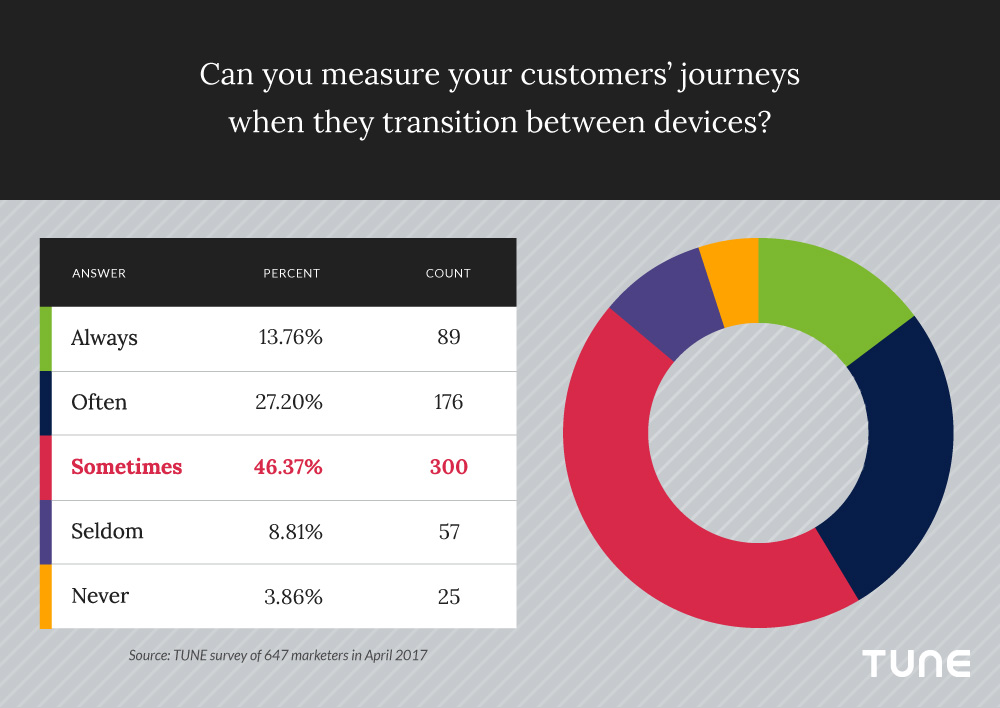
And, in fact, it’s much more challenging than just cross-device tracking, because there’s also cross-platform on single devices.
Just think: On a desktop computer, you might touch a potential customer …
- on your website
- via email
- on Twitter or Facebook
- on a third-party product review website
- via a messaging platform or service
Similarly, on a mobile phone, you might touch a customer:
- in your app
- on your mobile website
- on a social network
- via an email
- via SMS or another messaging platform
Combine those options, many of which occur in real-world scenarios, and you’ve got thousands of potential journeys in a customer’s exploration of your brand and your products across desktop, mobile, real world, social shares, face-to-face word of mouth, smart TV, wearable technology, and other channels and waypoints.

Stewart Rogers
De-duplicating all of these touches and resolving them down to a single individual is a massive task.
“Just as we start to get closer to hyper-personalization, and 1:1 marketing, new devices and channels appear that make it almost impossible to understand who is using the device. Smart TVs and connected cars do not identify an individual persona in the same way a smartphone, tablet, or laptop likely does, and that makes it hard to target the right content at the right time.”
– Stewart Rogers, journalist, analyst, and speaker for VentureBeat
But privacy …
If it’s not blindingly obvious already, it should be: Privacy matters. Both your customers’ data and data about people who are not yet customers need to be treated with caution, respect, and care.
Staying legal is important. But just as important is not acting in ways that might be legal but are unethical and not explicitly permitted by the customers you are targeting.
It’s tempting to gather as much first-, second-, and third-party data as you can to improve your marketing. It’s wise, however, not to push the envelope on what’s acceptable.
And … cost & complexity are skyrocketing
Marketers are desperate for technology solutions that will solve their marketing challenges. And there are literally thousands of technology vendors who will gladly take your money and deliver their services.
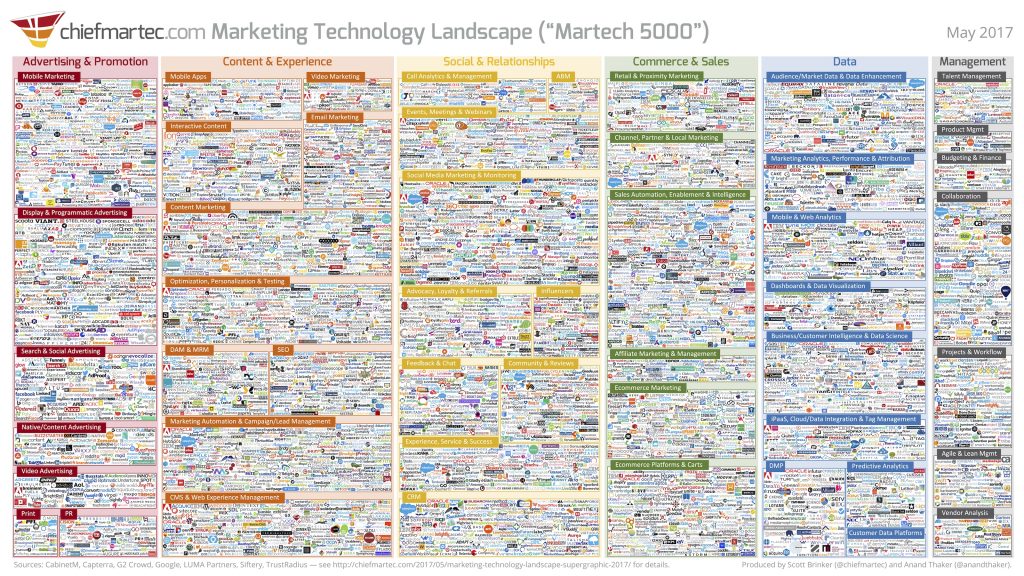
The “Martech 5000”
The question is, however: How much should you spend? And, how many tools do you need?
We asked marketers how much of their technology budget they would spend to get full and complete visibility of their customers’ journey. The answer was shocking.
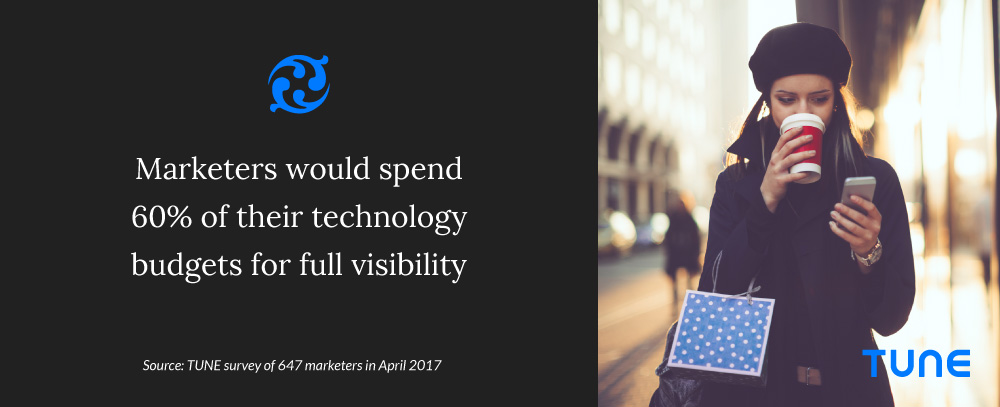
Six hundred and forty-seven marketers told us that they would spend a massive 60.2% of their technology budgets for a tool that would give them full visibility into their customers’ journeys.
The reality, of course, is that it would take much more.
To even approach the 100% visibility level, marketers would need a data management platform. They’d need to instrument everything they do, and everything their companies do — including the product — for data collection at every customer touchpoint. Marketers would also need to buy copious amounts of third-party web, social, demographic, and interest data to enrich their first-party data, plus tools and personnel to match, integrate, normalize, and de-duplicate. Then they’d need to invest heavily in technology and personnel to understand and map all the data.
Oh, and then — given that you might actually want to do something with all this information — marketers would need teams of people to focus on applying the lessons of the data to future marketing campaigns, tweaking and changing regularly as the data indicates.
In other words, this would likely take multiples of even the best-funded Fortune 1000 marketing organizations’ budgets. And even then, it wouldn’t include the pieces where a friend talks to a friend, a decision-maker messages a colleague, or any of the other millions of publicly invisible ways we make decisions.
But there is a better way.
Take the road less traveled: Amazon shows how to win
Let’s assume you do want to know a significant amount of data about your customers’ journeys, but you’re not trying to be Sauron’s all-seeing eye. Amazon shows a clear path to success that you can follow.
Be login-worthy
Do you provide enough value for customers that they feel a desire to create an account with you? And enough value that they feel the need to log into your experiences no matter what platform they’re on?
You want to know your customers.
To know your customers, be login-worthy. If you’re login-worthy, you can learn more about how your customers come to you, interact with you, feel about you, and talk to others about you — and you can influence those things. In addition, if you offer multiple products and services, as most retailers and big brands do, you can learn immensely more about what your customers like, what they want, and what they need, in aggregate and down to finer and finer groups.
Amazon solves for that by offering services that matter.
On the retail side, it’s order status and archived items and one-click ordering. On the media side, it’s music and movies tailored to your experience. On the convenience side, it’s personal assistance from Alexa for your smart home and smart life.
What do you offer that’s comparable?
Be download-worthy
For the exact same reason, you need to be download-worthy.
Your mobile app is not for all your customers, but it is for your most loyal and passionate and profitable customers.
There’s no more personal computing a device than the modern mobile phone, and brands that win disproportionately live on this “three-foot device” … never more than three feet from your body. This is precisely how Amazon has won — as we showed in our Unicorn Dinosaurs report, Amazon has more than 750 million mobile customers: people who use Amazon mobile apps.
That’s more than 4X all of its competitors combined:
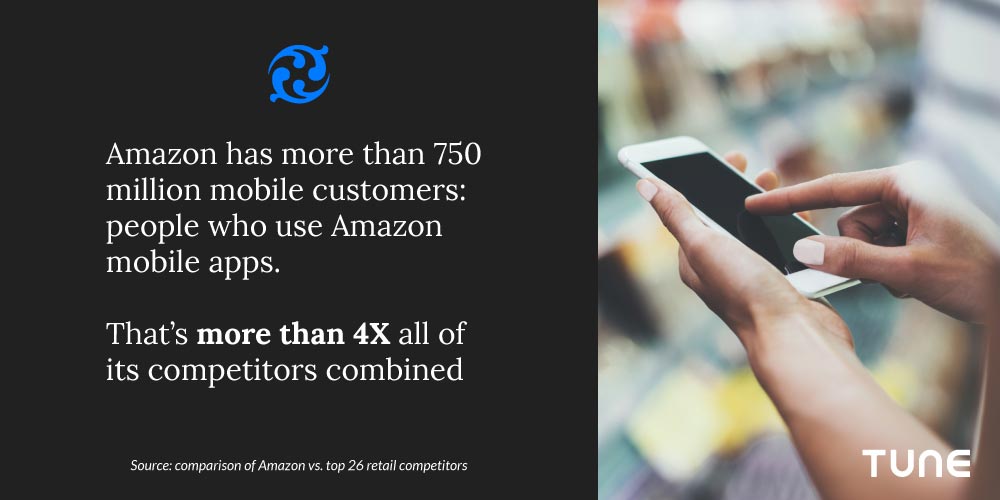
That gives Amazon unprecedented marketing power in both understanding its customers and in promoting its products and services to them. The result is obvious to anyone who has been watching retail in any way over the past decade:
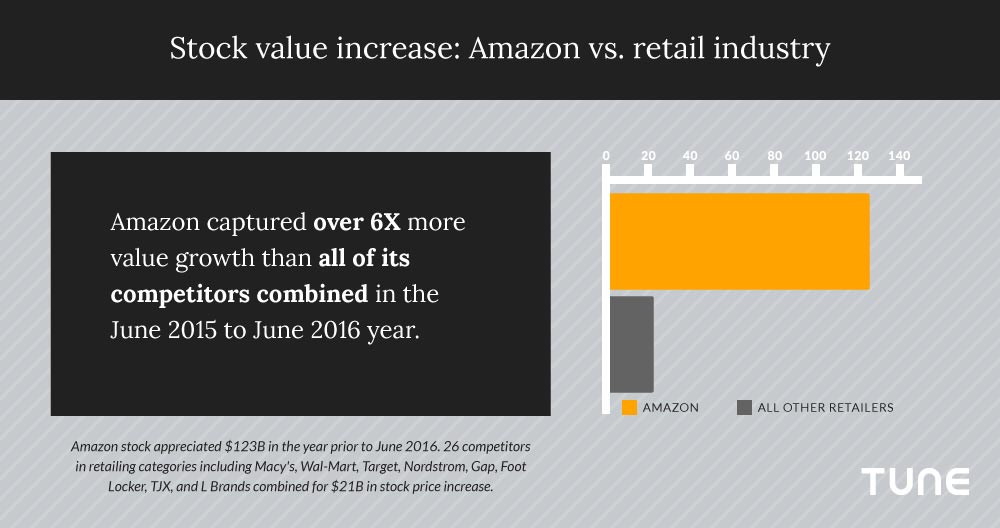
Amazon captured over 6X more value growth than all of its competitors combined in the June 2015 to June 2016 year.
That’s impressive. And that’s the power of mobile.
It’s not just Amazon, of course. Numerous mobile-first and massive brands or enterprises have accomplished this feat. Starbucks is one. Home Depot has shown amazing prowess at mobile. Caterpillar — yes, the big earth-moving machinery company — has 355,000 mobile app using customers. (For more details, see our Unicorn Dinosaurs report.)
Knowing your customer is marketing dialed to 11
A logged-in experience means you travel the same path as your customer.
But it’s important that this experience be organic to your brand and native to your product.
Marketers can perform circus tricks and play gimmicks with contests to get people to take action, sign up, and log in, but these will always have a limited shelf life. They can be valuable as a tactic, but they require ongoing injections of cash and creativity, and they don’t drive long-term behavior.
What drives long-term behavior?
A service, product, or presence that people want to be part of. Not to lease, or rent, or even to own, but to incorporate into their lives. That means brand is critical, but it also means product and customer experience is critical.
That’s marketing dialed to 11, because knowing your customer means you know what kind of customers you have, and which kind of customers are best. And that means you know something about how to find people who look like your best customers. The true beauty of turning marketing to 11 in this way is that you can accomplish these immensely important strategic imperatives without gathering huge amounts of third-party data on random people, looky-loos, and tire-kickers.
In other words, without invading people’s privacy.
Author
Before acting as a mobile economist for TUNE, John built the VB Insight research team at VentureBeat and managed teams creating software for partners like Intel and Disney. In addition, he led technical teams, built social sites and mobile apps, and consulted on mobile, social, and IoT. In 2014, he was named to Folio's top 100 of the media industry's "most innovative entrepreneurs and market shaker-uppers." John lives in British Columbia, Canada with his family, where he coaches baseball and hockey, though not at the same time.

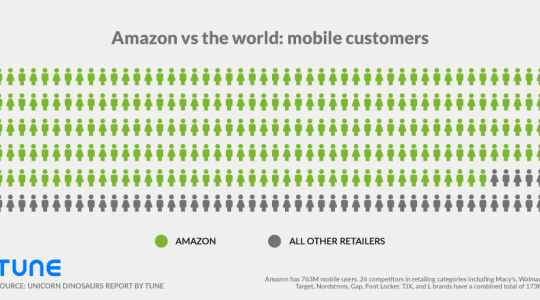


Leave a Reply
You must be logged in to post a comment.